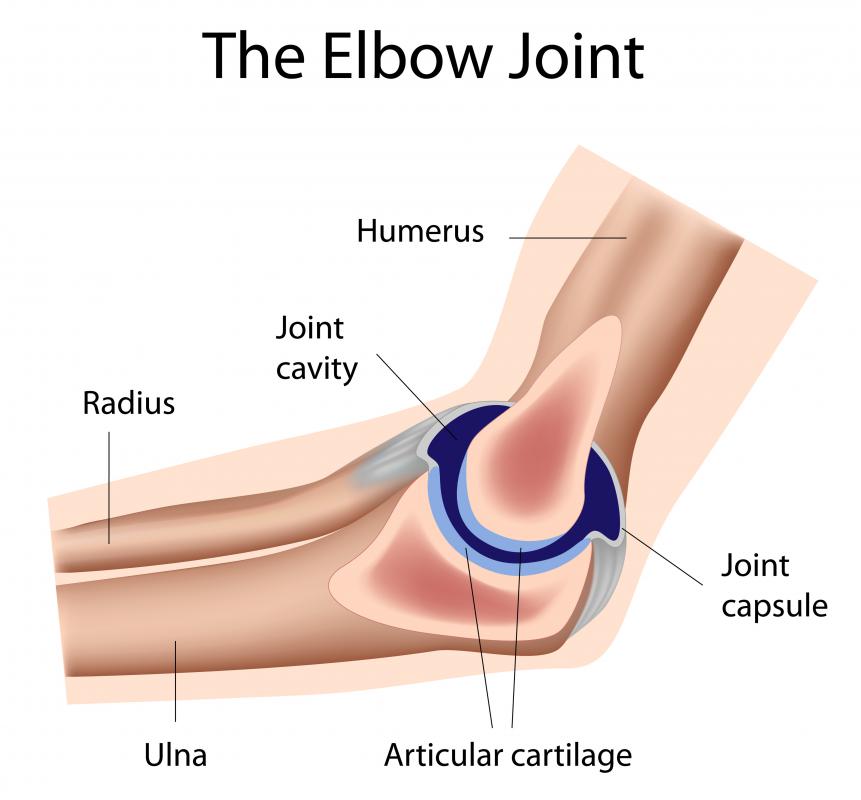At WiseGEEK, we're committed to delivering accurate, trustworthy information. Our expert-authored content is rigorously fact-checked and sourced from credible authorities. Discover how we uphold the highest standards in providing you with reliable knowledge.
What Is a Radial Head Subluxation?
The radius is one of the long bones of the forearm; it has two heads, one on either end. Radial head subluxation is a condition that occurs when one end of the bone slips out of position in the elbow. Young children are most prone to this problem and it may not be immediately obvious, although affected children tend to feel pain when the arm is in a straight position. The most common cause of radial head subluxation is falls, and the condition is easily treatable.
In the lower arm, two long bones provide structure and movement to the arm. These are the radius and the ulna, and they are held onto other bones in the hand and in the upper arm through ligaments. When a radial head subluxation occurs, the upper end of the radius slips out of place slightly. This is referred to as subluxation, a situation which is like a partial dislocation. The ligaments attached to the radial head are moved into the joint space due to the bone displacement, and then the bone cannot fit back into the correct placement.

Young children have ligaments in the elbow that are not fully developed, and therefore it is this group that is most prone to radial head subluxation. Generally, toddlers experience the highest occurrence of radial head subluxation, but less commonly, it can also happen in adults. As well as the weak ligaments in small children, the way in which they use their arms also contributes to the prevalence of subluxation. Parents hold a child's hand in a way that sometimes allows children to swing their body weight off the supported hand. When a child falls, his or her weight is also dangled on that one arm, supported by the parent.

Minimum stress on the hand is needed to produce a radial head subluxation. It can occur even when pulling a child up by the hand, or in situations that appear minor like falls or swinging the child around. Some children with radial head subluxation have no easily identifiable cause of injury.
Children with the injury tend to hold the arm in a bent position and dangling at his or her side. Pain or fear can cause the kid to cry, and at the site of injury there is usually no swelling or tenderness to point toward a problem. As the condition is a form of dislocation, the treatment involves moving the head of the bone back into the joint. This procedure does not typically require the child to be given painkilling drugs or anesthesia, and it only requires a doctor to pop the bone back into place.
AS FEATURED ON:
AS FEATURED ON:














Discuss this Article
Post your comments